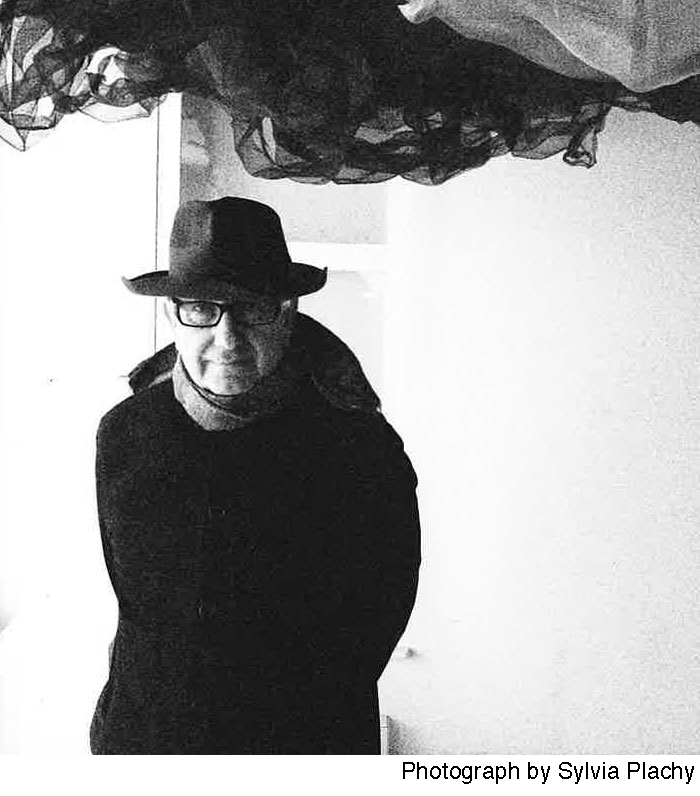No products in the cart.

Born in Budapest, Hungary, George Peck has been living in the United States since 1957. He studied at City College in New York, and studied with Ron Gorchov and Tony Smith at Hunter College, CCNY, as well as studying Interaction of Color with Josef Albers. He has participated in numerous exhibitions throughout the course of his career, and was a visiting professor at the Hungarian University of Fine Arts in 1995.
His work has been exhibited in solo and group exhibitions at institutions throughout the United States and Europe, such as; The Birmingham Civil Rights Institute, Kate Ganz Gallery, Leo Castelli Gallery and Bette Stoler Gallery, New York; The High Museum of Art, Georgia; Karl Ernst Osthaus-Museums Hagen, The American Embassy, Germany; Baraz Gallery, Istanbul; Museum of Fine Arts, Budapest, and many others.
His work has been reviewed extensively in such publications as The New York Times, Art in America, ArtNews, Art on Paper, and Artforum, among others. His paintings are represented in numerous private and public collections in both the United States and Europe, such as: The Metropolitan Museum of Art, Brooklyn Museum of Art and Grey Art Gallery, NY; High Museum of Art, Atlanta, GA; Museum of Modern Art, Stockholm, Sweden; Museum of Applied Arts, Kiscelli Museum and Ernst Museum, Budapest, Hungary. George Peck lives and maintains studios in both New York City and Buskirk, NY.
George Peck: Artist Statement
There is no predetermined concept as I lay the oil paint onto the canvas, only an urgency and a hope to reach something unknown, something that can only be found through this act of painting, guiding me to a place where only the unrestrained stream knows its coordinates.
Over the past fifty years, I have worked with oil paintings, pastels, sculptures, videos, and installation pieces. While my tools change, my fundamental intent remains the same: to investigate abstraction, color, light, space, and their relationship to materials.
The act of painting places me in the center of concentration. I know a work is complete when a piece becomes its own self, when I feel detached from it entirely, as if it were not me who had done it. I look at the work and feel that it is something I have to get to know, perhaps attempting to retrace the stream of action that led me to its completion. The work will take its time to reveal.
In the 70s, my Monochromatic paintings searched for a delicate balance between pictorial illusion and physicality, made tangible on a shaped canvas made into a bent surface. The works extend the possibilities of working with unknown ranges of colors; this eventually leads to beyond being just “monochrome.” I used a mason’s trowel, which was polished flat to burnish the oil paint layer by layer. At times, they have reached past 100 layers.
The paintings from the 80s investigate voices of duality, worlds brought together. The density of the gestural abstraction, its raw energy and materiality, builds a new view and possibility. These works came from my significant experience of visiting New Mexico, where many voices were talking to me, and the history of the place directed the conversation to where beauty and violence coalesce.
In the Composite Pictures of the 90s, painting turns into violently cutting up a completed work and repositioning it to occupy an entirely new space. They eventually departed from a rectangular configuration, radically taking aggressive hold of the space they operated in/on. Networks spoke to decomposition and a revisioned environment.
After 9/11, I turned to video installations that dealt with socio-political interests.
Amidst the challenges of the pandemic, I’ve maintained a near-daily practice of new works with pastels on paper. These works, which I refer to as Surreal Abstractions, are a response to the altered reality of lockdown, the profound uncertainty, and undreamed dreams. They capture this time’s very real but unreal atmosphere, inevitably drawing upon the language of the surreal.
I continue to question how art is related to the past and how it is made and seen. My work is rooted in history and deeply resonates with the world’s sociopolitical fabric. Art history is a collage of many dialogues; all art—good art—uses its unique perspective to reshape, recontextualize, and respond to the world around them, not seeking to invent something entirely original but rather to escape convention.
I have found that truly powerful work no longer fits into a dialogue and comes with an entirely new set of rules to view it. You must deal with what these paintings do to you, standing in front of the work, only with yourself, allowing it to overcome your own built-up resistance: time withers, the outside world pales—it is only you and the painting and its effulgent world.
This is what my work seeks to do.


